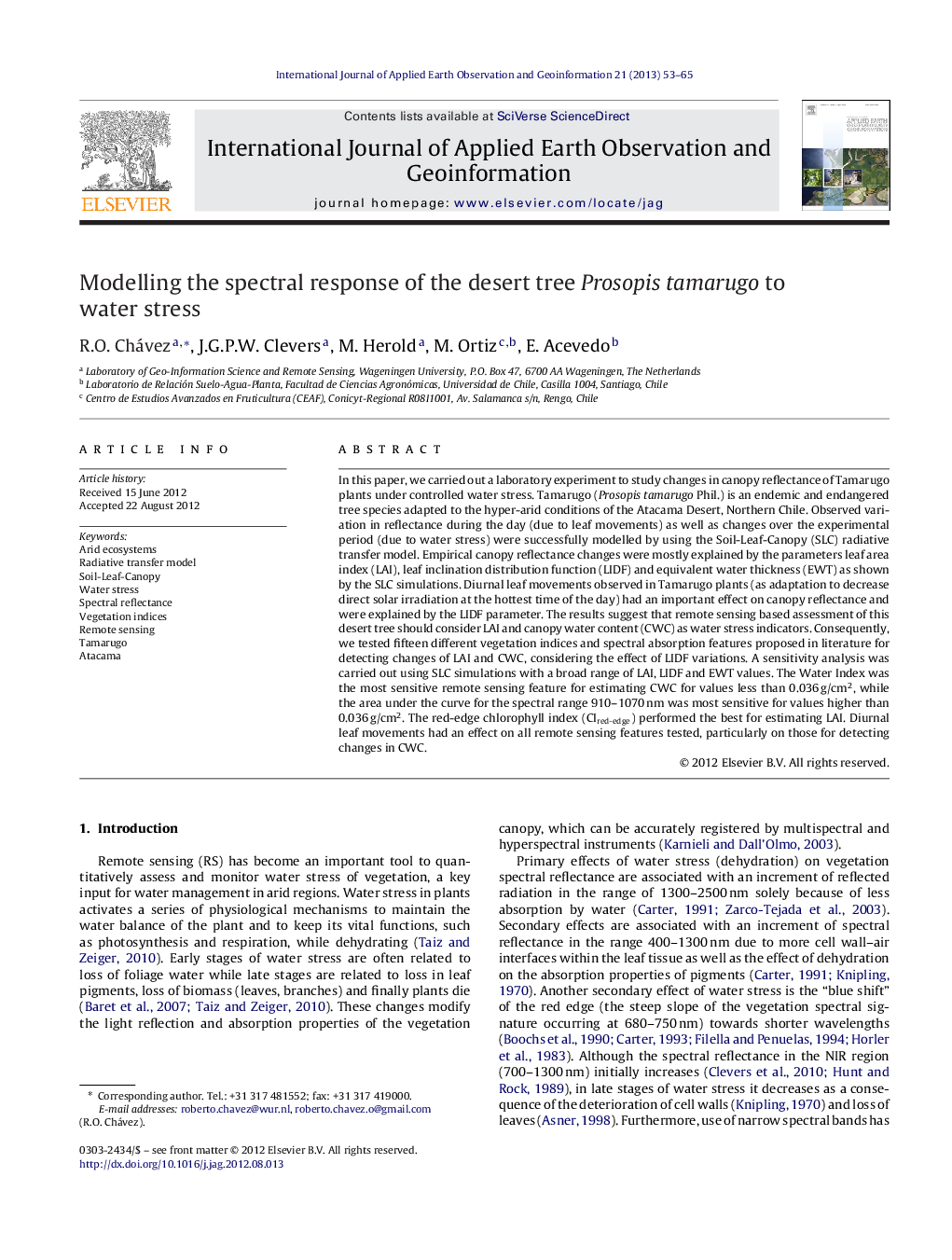| Article ID | Journal | Published Year | Pages | File Type |
|---|---|---|---|---|
| 4464840 | International Journal of Applied Earth Observation and Geoinformation | 2013 | 13 Pages |
In this paper, we carried out a laboratory experiment to study changes in canopy reflectance of Tamarugo plants under controlled water stress. Tamarugo (Prosopis tamarugo Phil.) is an endemic and endangered tree species adapted to the hyper-arid conditions of the Atacama Desert, Northern Chile. Observed variation in reflectance during the day (due to leaf movements) as well as changes over the experimental period (due to water stress) were successfully modelled by using the Soil-Leaf-Canopy (SLC) radiative transfer model. Empirical canopy reflectance changes were mostly explained by the parameters leaf area index (LAI), leaf inclination distribution function (LIDF) and equivalent water thickness (EWT) as shown by the SLC simulations. Diurnal leaf movements observed in Tamarugo plants (as adaptation to decrease direct solar irradiation at the hottest time of the day) had an important effect on canopy reflectance and were explained by the LIDF parameter. The results suggest that remote sensing based assessment of this desert tree should consider LAI and canopy water content (CWC) as water stress indicators. Consequently, we tested fifteen different vegetation indices and spectral absorption features proposed in literature for detecting changes of LAI and CWC, considering the effect of LIDF variations. A sensitivity analysis was carried out using SLC simulations with a broad range of LAI, LIDF and EWT values. The Water Index was the most sensitive remote sensing feature for estimating CWC for values less than 0.036 g/cm2, while the area under the curve for the spectral range 910–1070 nm was most sensitive for values higher than 0.036 g/cm2. The red-edge chlorophyll index (CIred-edge) performed the best for estimating LAI. Diurnal leaf movements had an effect on all remote sensing features tested, particularly on those for detecting changes in CWC.
► We studied the spectral response of Tamarugo plants to water stress in the lab. ► We used the SLC radiative transfer model to explain changes in canopy reflectance. ► Observed changes were explained by LAI, LIDF (leaf slope) and EWT (SLC parameters). ► Diurnal changes in LIDF had an important effect on canopy reflectance. ► We debated the sensitivity of various remote sensing features to sense water stress.
